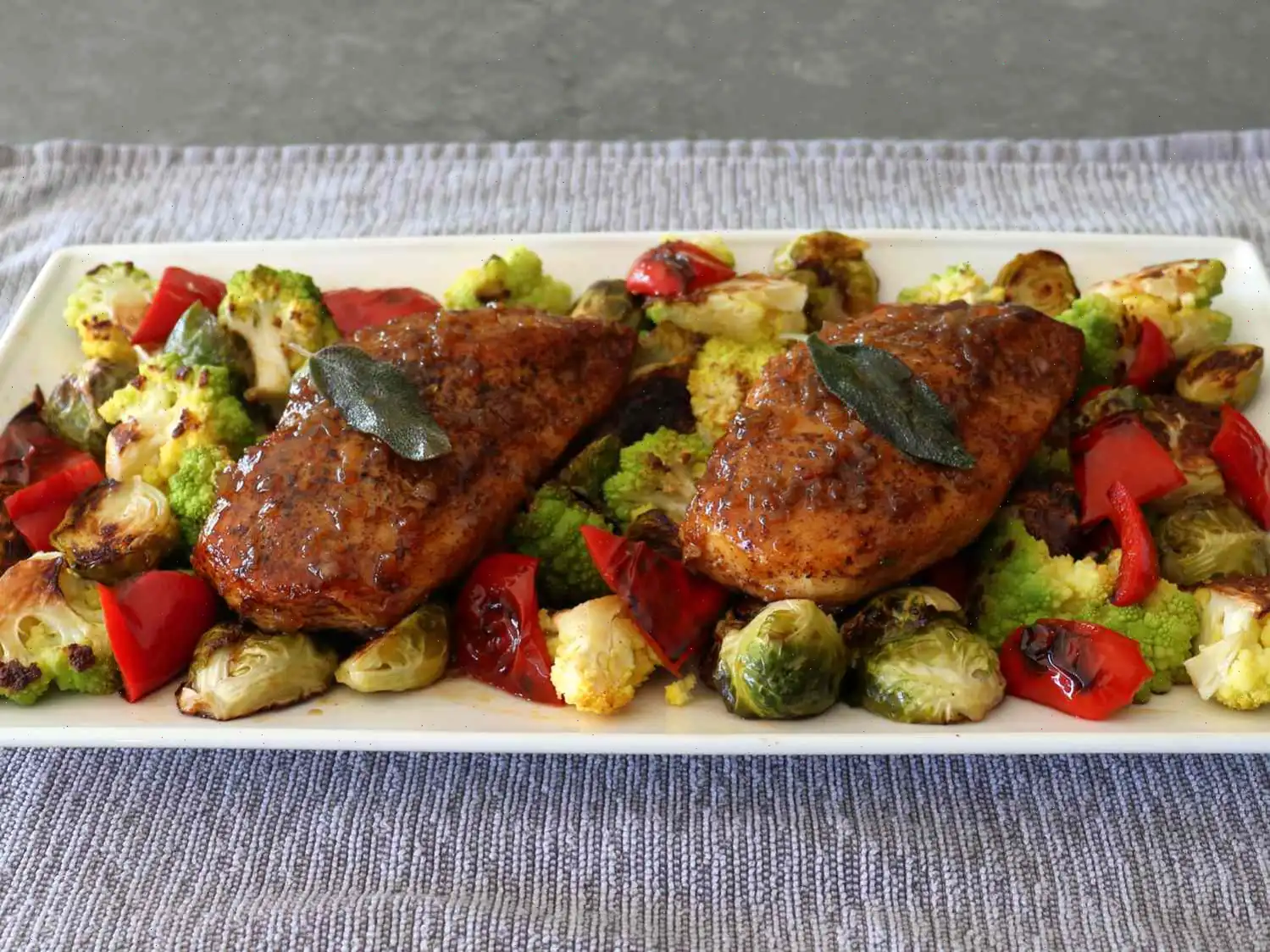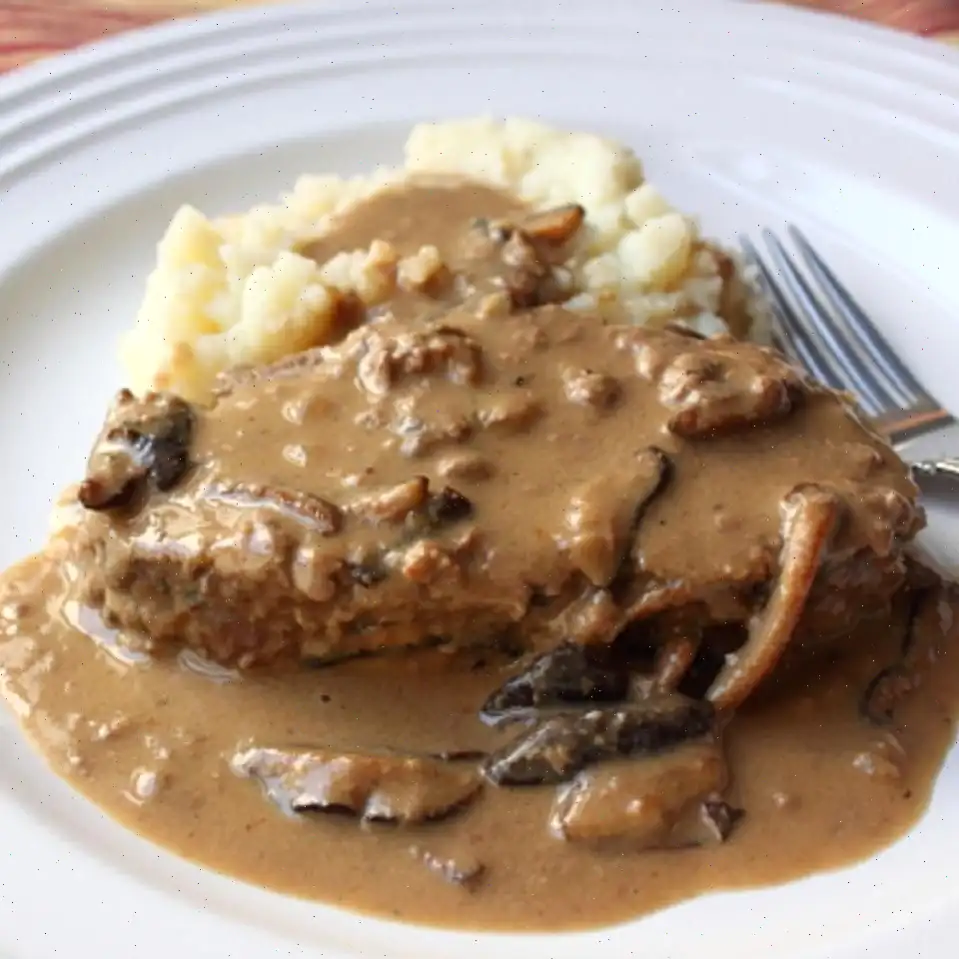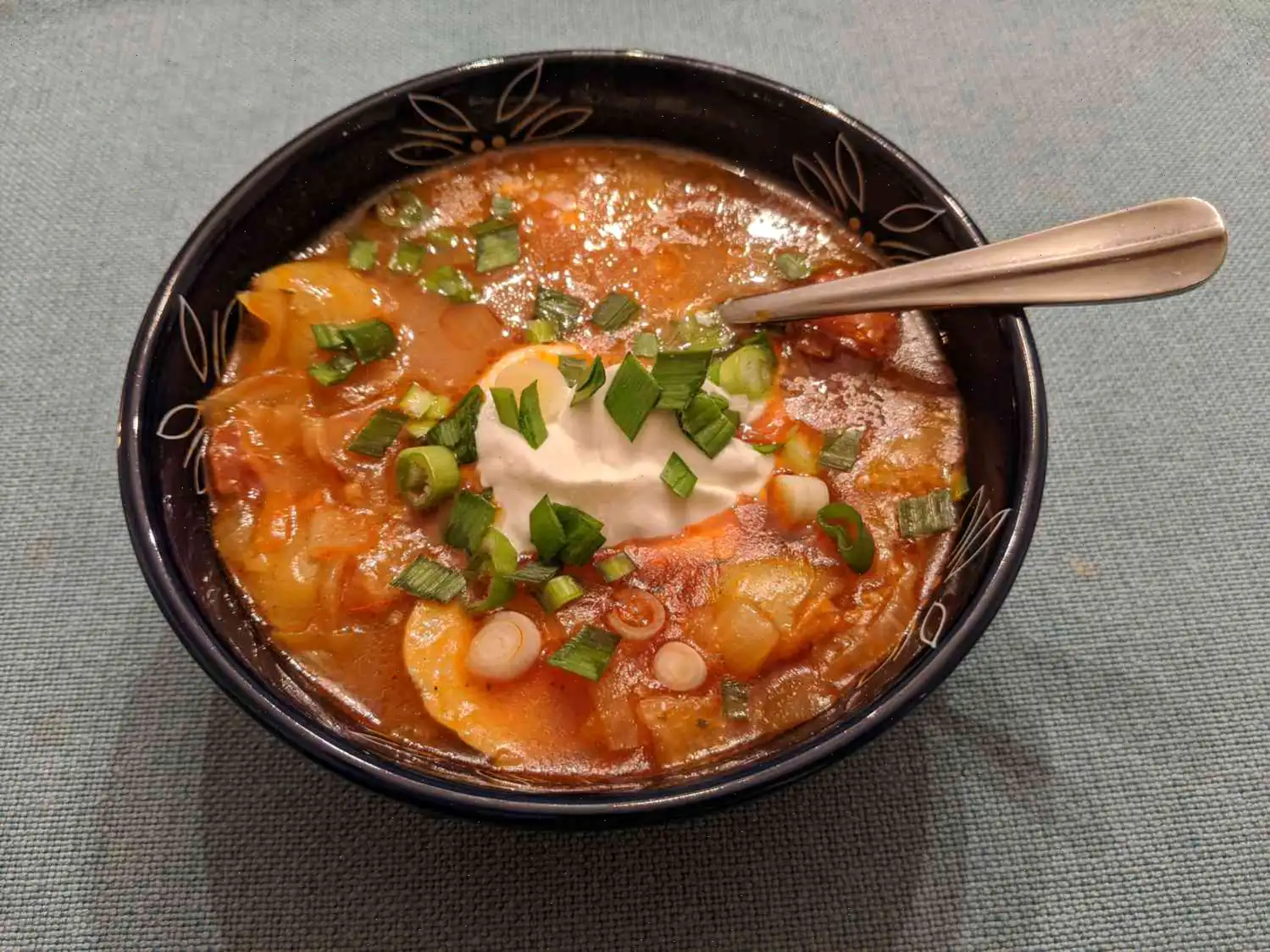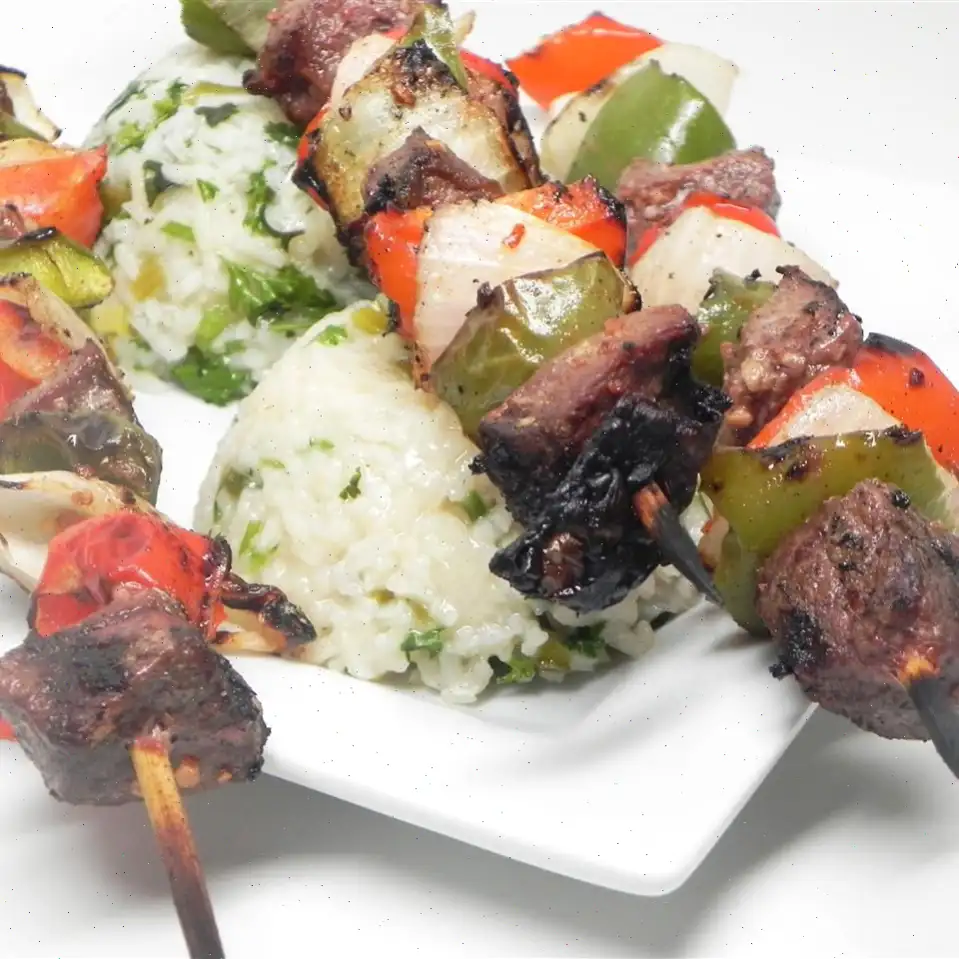
Apple Cider Chicken Recipe
This recipe yields 2 servings.
Ingredients
- 2 skinless, boneless chicken breasts
- 1 teaspoon kosher salt
- 1/4 teaspoon freshly ground black pepper
- 1 pinch cayenne pepper
- 4 tablespoons unsalted butter, divided
- 6 sage leaves (optional)
- 2 tablespoons minced shallot or onion
- 1 1/4 cups apple cider
- 1/3 cup apple cider vinegar
Directions
Step 1: Season the chicken breasts on both sides with kosher salt, black pepper, and cayenne. Set aside.
Step 2: In a skillet, melt 3 tablespoons of butter over medium heat. Add the sage leaves and fry for 1 to 2 minutes until crispy. Remove the sage leaves and set them aside.
Step 3: In the same skillet, add the chicken breasts and cook for about 4 minutes on each side, until fully cooked through. Remove the chicken from the skillet and place on a plate. Cover loosely with foil to keep warm.
Step 4: Add the minced shallot (or onion) to the skillet and saut for 1 minute.
Step 5: Pour in the apple cider and apple cider vinegar. Stir to combine and bring the mixture to a simmer over medium-high heat. Let it cook for a few minutes until the sauce has reduced by half.
Step 6: Lower the heat to low, then return the chicken breasts to the skillet, along with any juices that have accumulated on the plate. Cook for a few more minutes, turning occasionally, and baste the chicken with the sauce until it is hot. The internal temperature of the chicken should reach 165F (74C) when measured with an instant-read thermometer.
Step 7: Remove the chicken from the skillet and transfer it to a serving plate. Add the remaining 1 tablespoon of butter to the sauce in the skillet. Turn off the heat and swirl the pan to emulsify the butter into the sauce, creating a silky finish.
Step 8: Taste the sauce and adjust the seasoning if needed. Spoon the sauce over the chicken, garnish with the crispy sage leaves, and serve immediately.
Nutrition Facts (per serving)
| Calories | 489 |
| Total Fat | 28g |
| Saturated Fat | 16g |
| Cholesterol | 163mg |
| Sodium | 731mg |
| Total Carbohydrate | 20g |
| Dietary Fiber | 1g |
| Total Sugars | 16g |
| Protein | 38g |
| Vitamin C | 61mg |
| Calcium | 45mg |
| Iron | 2mg |
| Potassium | 537mg |
* Percent Daily Values are based on a 2,000 calorie diet. Your daily values may be higher or lower depending on your calorie needs.
History and Origin of Apple Cider Chicken
Apple Cider Chicken traces its roots to European culinary traditions, particularly French cuisine, where the combination of fruit-based sauces and poultry has been cherished for centuries. The concept of cooking chicken with apple cider emerged as a way to balance the natural sweetness of apples with the savory richness of chicken. Over time, this dish evolved in North America, especially in regions known for apple orchards, where fresh apple cider was abundant during the fall harvest.
Regional Variations and Features
While the classic French version emphasizes a delicate pan sauce finished with butter, American adaptations often incorporate local ingredients, such as maple syrup, cinnamon, or nutmeg, to enhance the autumnal flavor profile. In the Northeastern United States, particularly in New England, Apple Cider Chicken may include hard cider instead of fresh cider for a more robust taste. The sage and shallot garnish is sometimes replaced with herbs like thyme or rosemary depending on regional preferences.
Comparison with Similar Dishes
Apple Cider Chicken differs from other sweet-and-sour chicken dishes, such as orange chicken or honey garlic chicken, in its use of apple cider as the primary flavoring liquid. Unlike Asian-inspired sweet-and-sour preparations, which often rely on cornstarch-thickened sauces and deep-fried chicken, this recipe maintains a pan-seared, tender chicken breast and a lightly reduced, buttery sauce. The balance between tangy cider and a subtle buttery finish sets it apart from more aggressively flavored poultry dishes.
Typical Serving Occasions
This dish is commonly served in both casual and fine dining settings. It pairs well with roasted vegetables, mashed potatoes, or wild rice. In the United States, Apple Cider Chicken often appears on seasonal menus during autumn festivals or Thanksgiving-inspired dinners, celebrating the apple harvest. Restaurants featuring farm-to-table cuisine frequently include it as a special highlighting local produce.
Interesting Facts
- Apple ciders acidity not only adds flavor but also helps tenderize the chicken during cooking.
- The technique of finishing the sauce with cold butter, known as monter au beurre in French cuisine, creates a glossy, rich coating without overpowering the ciders natural sweetness.
- This dish exemplifies the French culinary philosophy of combining simple ingredients to create complex flavors.
- Though traditionally made with chicken breasts, variations using thighs or drumsticks exist, offering a juicier alternative.
- Apple Cider Chicken is versatile enough for both weeknight meals and celebratory dinners, making it a favorite in many households.
You can listen to this recipe in AI audio format. Simply click the play button below to listen to the content in a format that suits you best. It’s a great way to absorb information on the go!
FAQ about Apple Cider Chicken Recipe
Comments
JumpyCurd7375
10/06/2025 01:52:54 PM
Wow! I do not rate most recipes with 5 stars but this one really rocked my world! I tried this technique also with chicken breast cutlets, as the Chef demonstrates in his Chicken French recipe, and I liked it even better when the chicken breast is pounded thin. Thanks for sharing this recipe with us.
Pamela Wilson
01/23/2025 04:11:38 PM
Y’all, this is next level.








